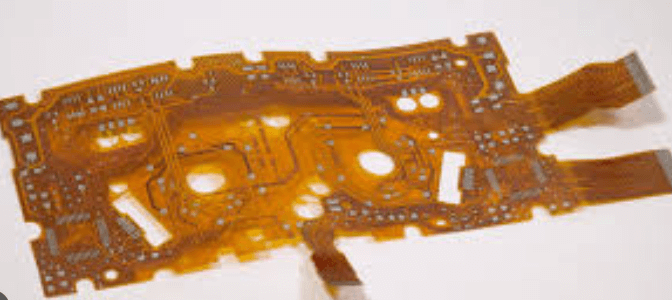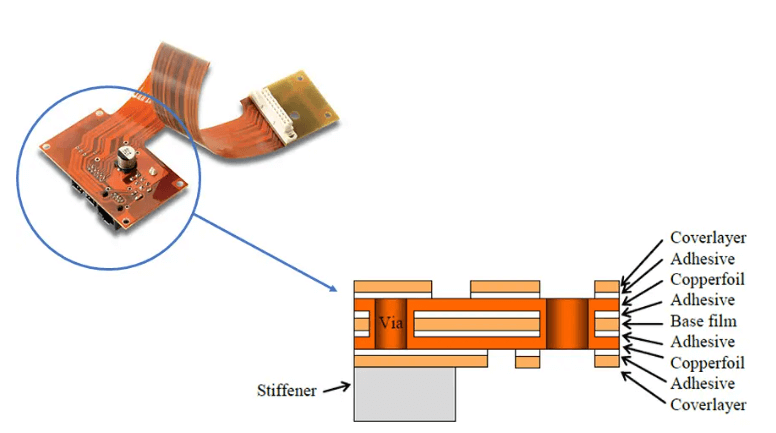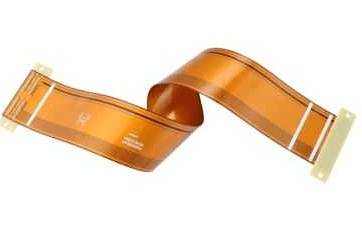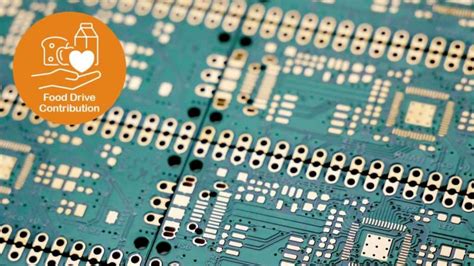Flex Circuit Assembly: A Comprehensive Guide
Introduction
Flexible circuits, also known as flex circuits or flex PCBs, are a type of printed circuit board that offer unique advantages in terms of flexibility, weight reduction, and space savings. Flex circuits are widely used in applications where traditional rigid PCBs are not suitable, such as in wearable devices, medical equipment, aerospace, and automotive electronics. The assembly of flex circuits, however, presents unique challenges due to their flexible nature and the need for specialized materials and processes. This article provides a comprehensive guide to flex circuit assembly, covering various aspects such as design considerations, material selection, assembly techniques, testing, and quality assurance. By understanding these elements, manufacturers can optimize their flex circuit assembly process to achieve high-quality, reliable, and cost-effective electronic products.
1. Design Considerations for Flex Circuit Assembly
1.1 Application-Specific Requirements
The first step in flex circuit assembly is understanding the specific requirements of the application. This involves:
- Functional Requirements: Define the electrical and mechanical functions that the flex circuit must perform. Consider factors such as signal integrity, power distribution, and thermal management.
- Environmental Conditions: Identify the environmental conditions the flex circuit will be exposed to, such as temperature extremes, humidity, and vibration. This will influence material selection and design considerations.
- Mechanical Flexibility: Determine the degree of flexibility required, including the number of bending cycles and the radius of curvature. This will impact the choice of materials and the design of the flex circuit.
1.2 Schematic Design
The schematic design is the foundation of the flex circuit assembly process. It involves creating a detailed diagram of the electronic circuit. Key considerations during schematic design include:
- Component Selection: Choose components that meet the electrical and mechanical requirements of the circuit. Consider factors such as power rating, tolerance, and package size.
- Signal Integrity: Ensure that the design maintains signal integrity by minimizing noise, crosstalk, and signal reflections.
- Power Distribution: Design an efficient power distribution network to ensure stable voltage levels and minimize power losses.
1.3 Flex Circuit Layout
Once the schematic design is complete, the next step is the flex circuit layout. The layout involves placing components and routing traces on the flex circuit. Key considerations during flex circuit layout include:
- Component Placement: Place components in a way that minimizes trace lengths, reduces noise, and facilitates efficient assembly. Group related components together and consider the thermal management of heat-generating components.
- Trace Routing: Route traces to minimize signal interference and ensure proper impedance matching. Use appropriate trace widths and spacing to handle the required current and voltage levels.
- Bend Areas: Design bend areas with care to avoid placing components or vias in areas that will experience mechanical stress. Use curved traces instead of sharp angles to reduce stress on the copper.
1.4 Design for Manufacturability (DFM)
Design for Manufacturability (DFM) is a critical aspect of flex circuit assembly. DFM involves designing the flex circuit in a way that makes it easy and cost-effective to manufacture. Key DFM considerations include:
- Component Orientation: Align components in the same direction to streamline the assembly process.
- Pad and Trace Sizes: Use standard pad and trace sizes to avoid custom tooling and reduce manufacturing complexity.
- Clearance and Spacing: Ensure adequate clearance and spacing between components to prevent assembly issues.

2. Material Selection for Flex Circuit Assembly
2.1 Flex Circuit Substrate Materials
The choice of substrate material can have a significant impact on the performance and cost of the flex circuit assembly. Common substrate materials include:
- Polyimide: A widely used material for flex circuits due to its excellent thermal stability, flexibility, and mechanical strength.
- Polyester (PET): A lower-cost alternative to polyimide, suitable for less demanding applications.
- Liquid Crystal Polymer (LCP): Used for high-frequency applications requiring low dielectric loss and moisture absorption.
2.2 Conductive Materials
The conductive material used in flex circuits is typically copper due to its excellent electrical conductivity and flexibility. Key considerations for conductive materials include:
- Copper Thickness: Choose the appropriate copper thickness based on the current-carrying requirements and flexibility needs.
- Adhesive vs. Adhesiveless: Decide between adhesive-based and adhesiveless copper laminates. Adhesiveless laminates offer better flexibility and thermal performance but are more expensive.
2.3 Coverlay and Stiffeners
Coverlay and stiffeners are used to protect the flex circuit and provide mechanical support. Key considerations include:
- Coverlay: Use a flexible coverlay material, such as polyimide, to protect the copper traces and provide insulation. The coverlay should be compatible with the flex circuit’s bending requirements.
- Stiffeners: Use stiffeners, such as FR-4 or polyimide, in areas where additional mechanical support is needed, such as where components are mounted or connectors are attached.
3. Assembly Techniques for Flex Circuit Assembly
3.1 Surface Mount Technology (SMT)
Surface Mount Technology (SMT) is a widely used assembly technique for flex circuits. The SMT process involves the following steps:
- Solder Paste Application: Apply solder paste to the flex circuit using a stencil or screen printing process. The solder paste is deposited on the pads where components will be placed.
- Component Placement: Place surface mount components onto the solder paste using a pick-and-place machine. The machine accurately positions each component based on the flex circuit design.
- Reflow Soldering: Pass the flex circuit through a reflow oven. The heat melts the solder paste, forming reliable solder joints that electrically and mechanically connect the components to the flex circuit.
3.2 Through-Hole Technology (THT)
Through-Hole Technology (THT) is used for components that require strong mechanical bonds or high power handling. The THT process involves the following steps:
- Component Insertion: Insert through-hole components into the flex circuit manually or using an automated insertion machine. The leads of the components pass through holes drilled in the flex circuit.
- Wave Soldering: Pass the flex circuit over a wave soldering machine. The machine creates a wave of molten solder that flows over the bottom of the flex circuit, forming solder joints on the component leads and pads.
3.3 Adhesive Bonding
Adhesive bonding is used to attach components and stiffeners to the flex circuit. Key considerations for adhesive bonding include:
- Adhesive Selection: Choose an adhesive that provides the necessary mechanical strength and thermal stability for the application.
- Curing Process: Follow the manufacturer’s recommendations for curing the adhesive to ensure a strong and durable bond.

4. Testing and Quality Assurance in Flex Circuit Assembly
4.1 Automated Optical Inspection (AOI)
Automated Optical Inspection (AOI) is a critical quality control tool in flex circuit assembly. AOI systems use high-resolution cameras and image processing software to detect defects such as soldering issues, missing components, and misaligned parts. By catching defects early, AOI helps reduce rework and scrap costs.
4.2 X-Ray Inspection
X-ray inspection is used to inspect solder joints that are not visible to the naked eye, such as those under Ball Grid Array (BGA) components. X-ray inspection can detect defects such as voids, cracks, and insufficient solder, ensuring the reliability of hidden solder joints.
4.3 In-Circuit Testing (ICT)
In-Circuit Testing (ICT) is another essential quality assurance tool. ICT involves using test probes to check the electrical performance of individual components and circuits on the flex circuit. ICT can quickly identify faults such as open circuits, short circuits, and incorrect component values, ensuring that only high-quality flex circuits move to the next stage of production.
4.4 Functional Testing
Functional testing involves testing the assembled flex circuit to ensure it performs as intended. This type of testing is crucial for verifying that the flex circuit meets the required specifications and functions correctly in its intended application. Functional testing can be automated to reduce labor costs and improve consistency.
4.5 Environmental Testing
Environmental testing evaluates the flex circuit’s performance under various environmental conditions, such as temperature extremes, humidity, and vibration. While environmental testing adds to the overall cost, it is essential for ensuring the reliability and durability of the flex circuit, particularly in demanding applications.

5. Cost-Saving Strategies in Flex Circuit Assembly
5.1 Economies of Scale
One of the most effective ways to reduce flex circuit assembly costs is to take advantage of economies of scale. By increasing production volume, manufacturers can spread fixed costs over a larger number of units, reducing the cost per unit. Strategies to achieve economies of scale include:
- Bulk Production: Produce flex circuits in large batches to reduce per-unit costs.
- Long-Term Contracts: Establish long-term contracts with suppliers to secure lower prices for materials and components.
5.2 Outsourcing Assembly
Outsourcing flex circuit assembly to specialized manufacturers can be a cost-effective strategy, especially for small to medium-sized companies. Benefits of outsourcing include:
- Lower Labor Costs: Outsourcing to regions with lower labor costs can significantly reduce assembly expenses.
- Access to Advanced Technology: Specialized assembly manufacturers often have access to the latest technology and equipment, improving quality and reducing costs.
- Reduced Overhead: Outsourcing eliminates the need for in-house assembly facilities, reducing overhead costs.
5.3 Lean Manufacturing
Implementing lean manufacturing principles can help reduce waste and improve efficiency in flex circuit assembly. Key lean manufacturing strategies include:
- Just-In-Time (JIT) Production: Produce flex circuits only as needed to reduce inventory costs and minimize waste.
- Continuous Improvement: Regularly review and optimize assembly processes to identify and eliminate inefficiencies.
- Quality Control: Implement robust quality control measures to reduce defects and rework, lowering overall costs.
5.4 Design Reuse
Reusing existing flex circuit designs can save time and reduce development costs. By leveraging proven designs, manufacturers can avoid the costs associated with designing and testing new flex circuits. Strategies for design reuse include:
- Modular Design: Develop modular flex circuit designs that can be easily adapted for different applications.
- Component Standardization: Standardize components across multiple designs to simplify procurement and reduce costs.
- Design Libraries: Maintain a library of proven flex circuit designs and components for quick reference and reuse.
Conclusion
Flex circuit assembly is a complex and multifaceted process that requires careful consideration of design, materials, assembly techniques, testing, and quality assurance. By optimizing each stage of the production process, manufacturers can achieve high-quality, reliable, and cost-effective electronic products. As the demand for flexible and lightweight electronic devices continues to grow, mastering the art of flex circuit assembly will be essential for staying competitive in the market. By following the guidelines outlined in this article, manufacturers can ensure the success of their flex circuit assembly process and deliver high-quality electronic products to their customers.







